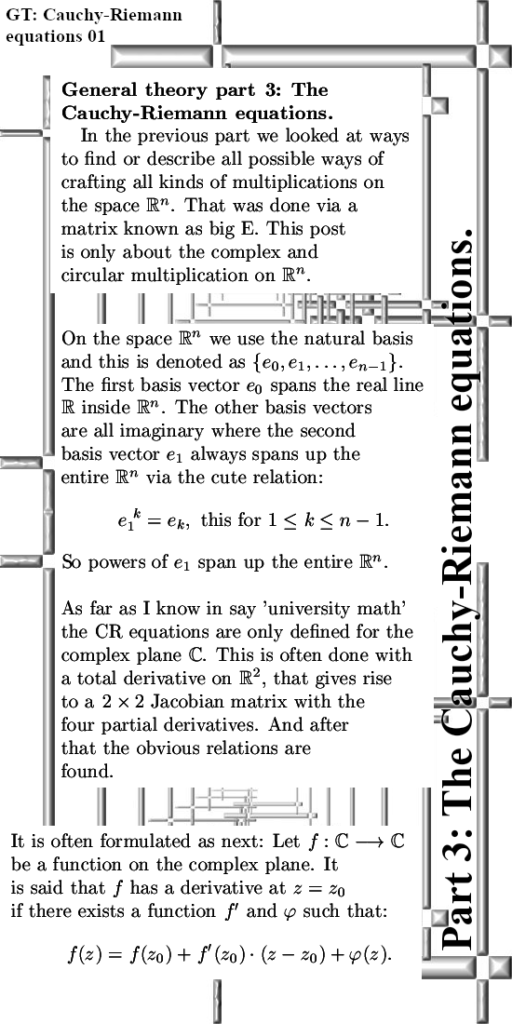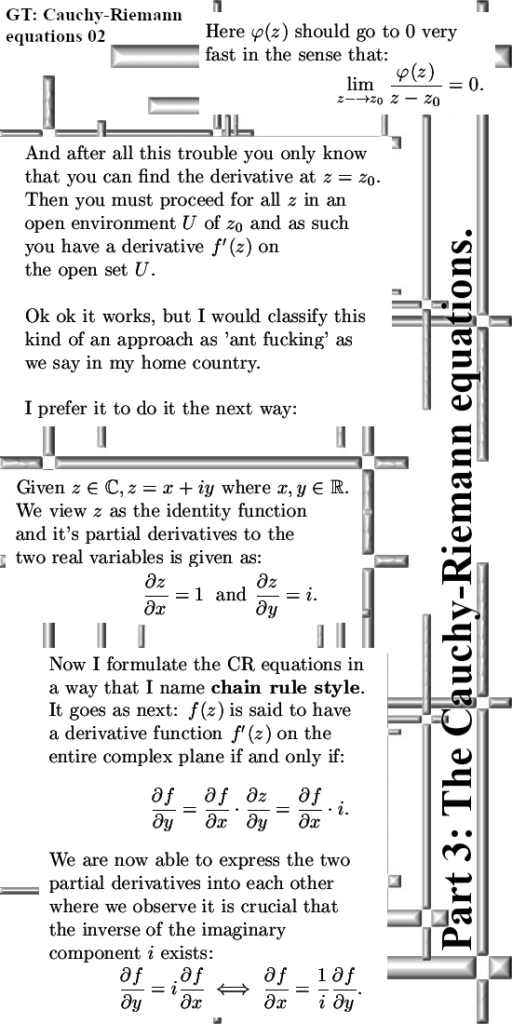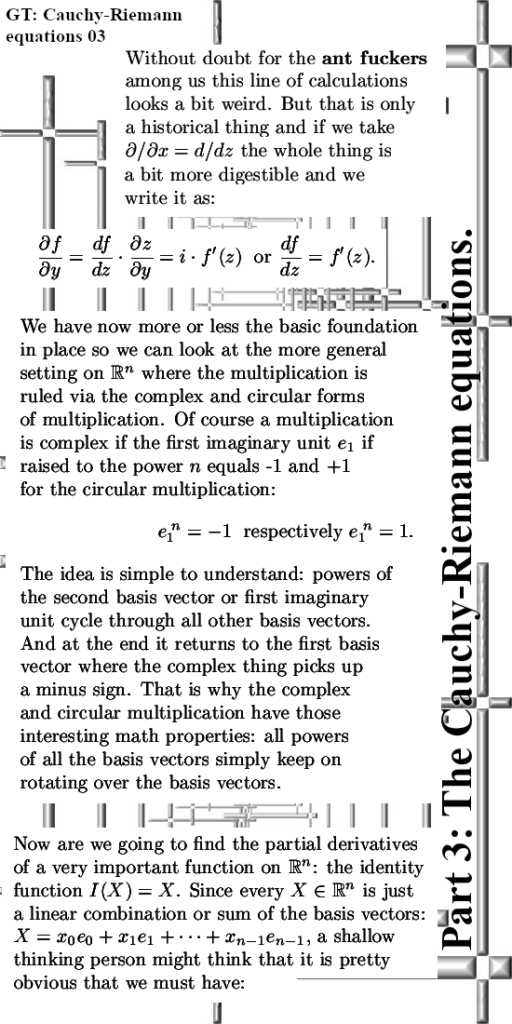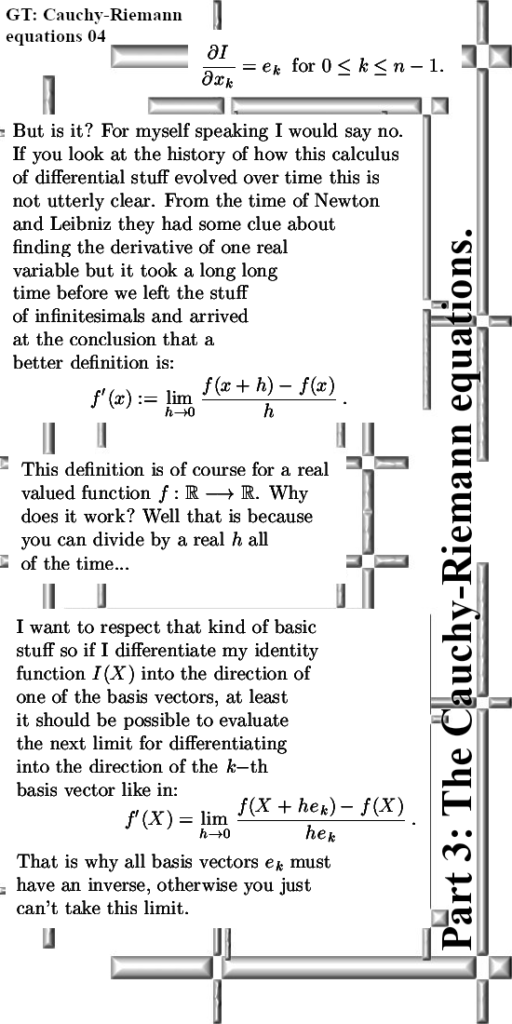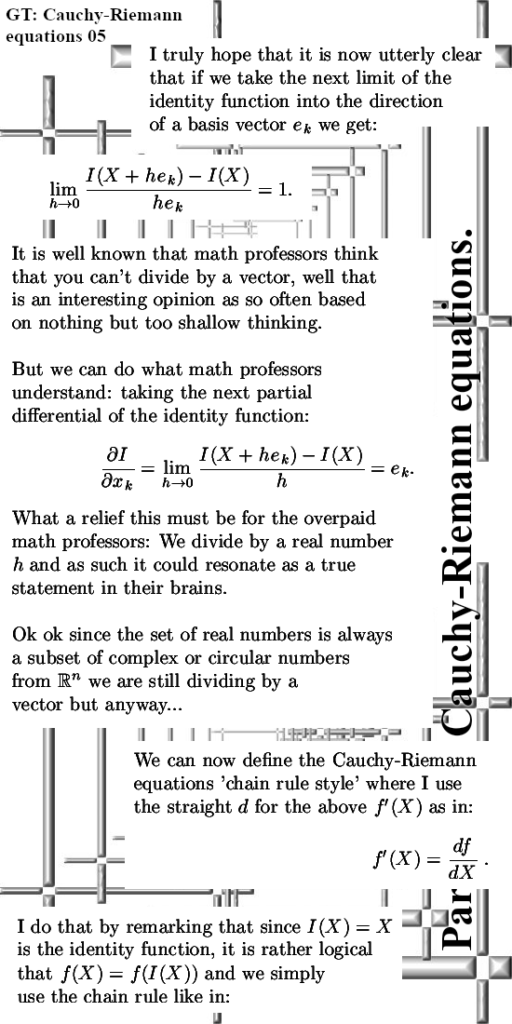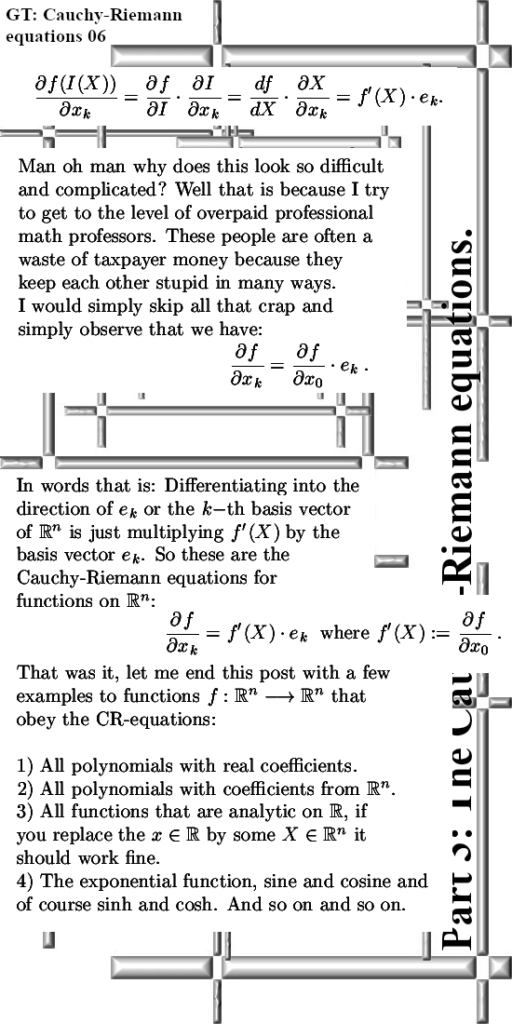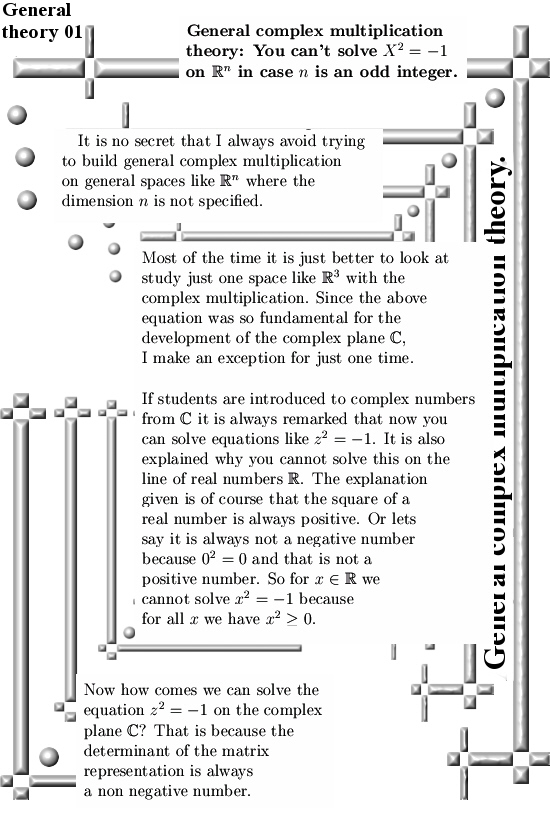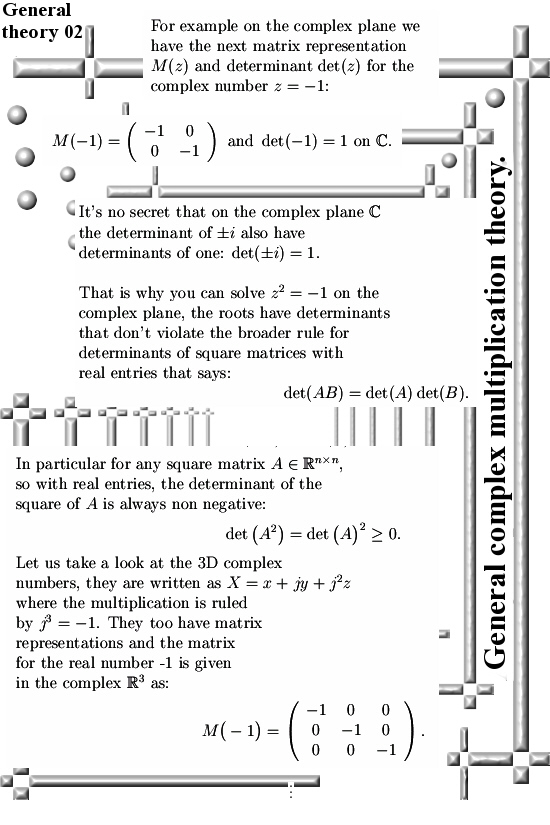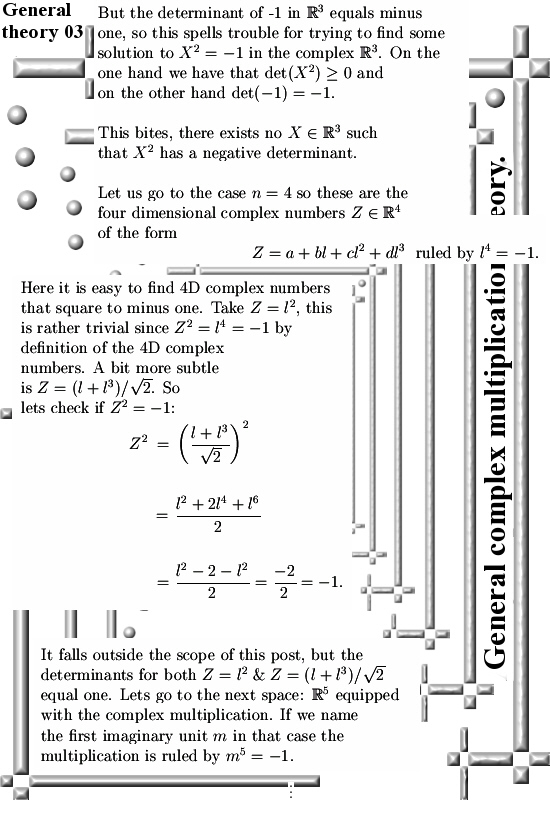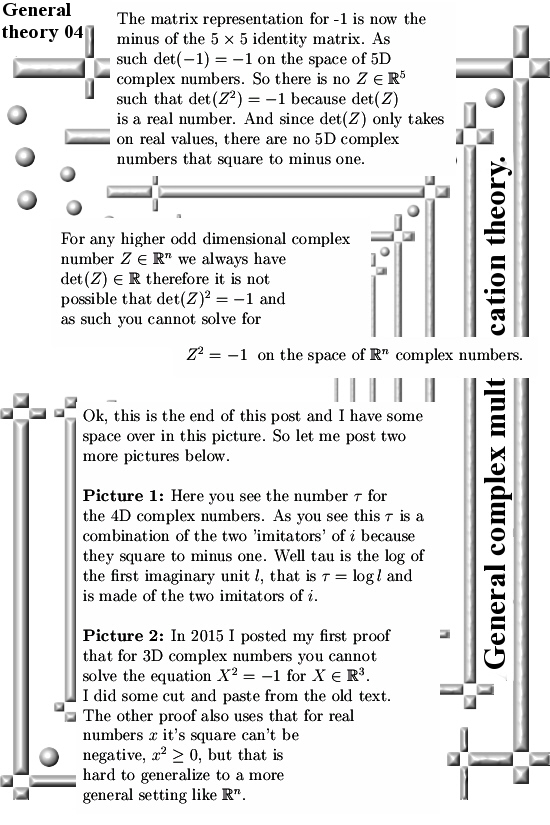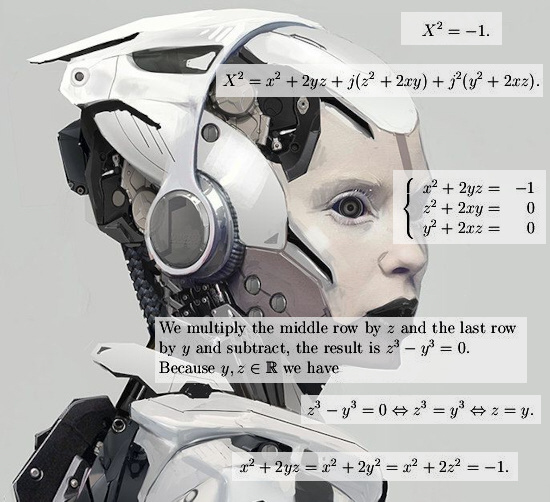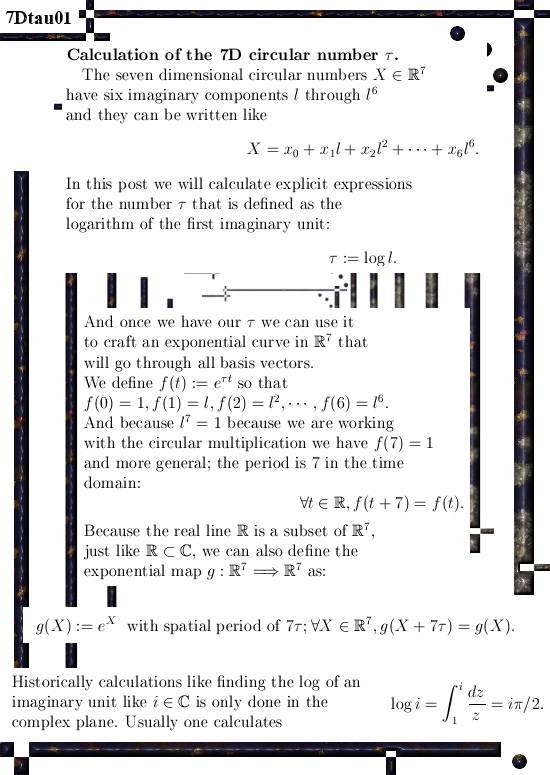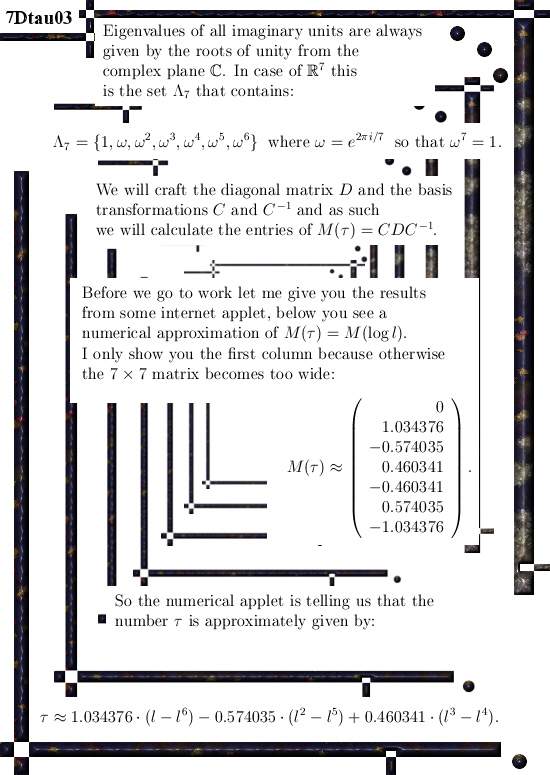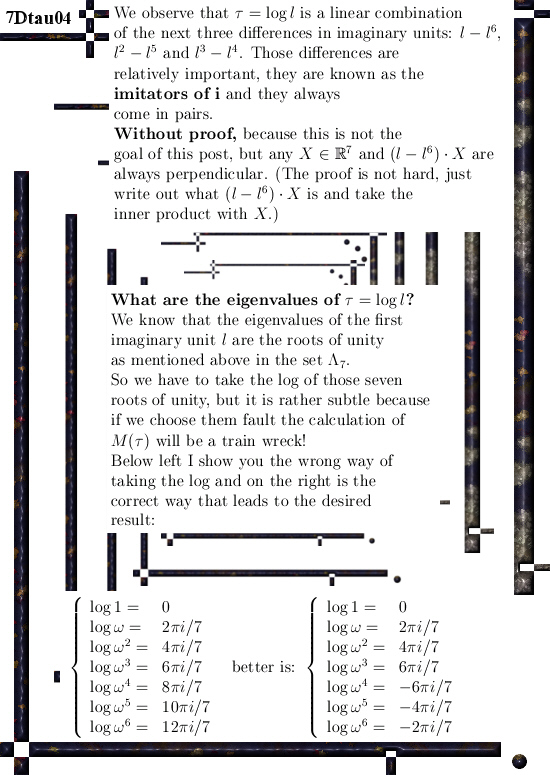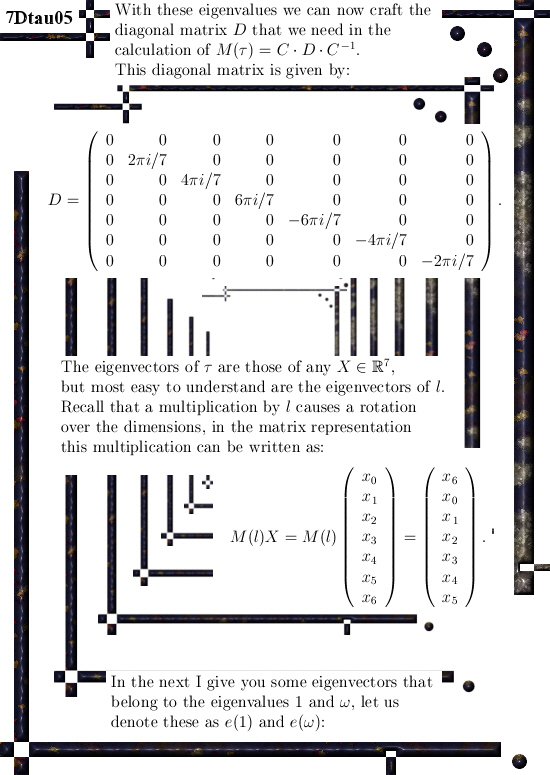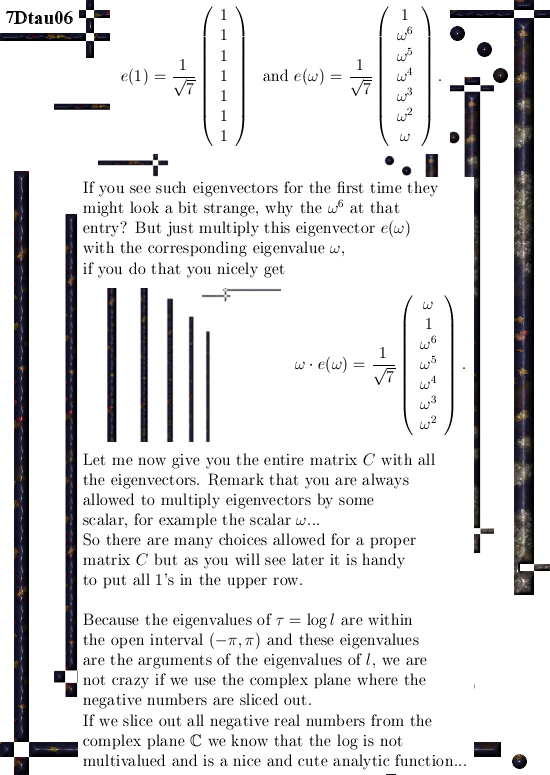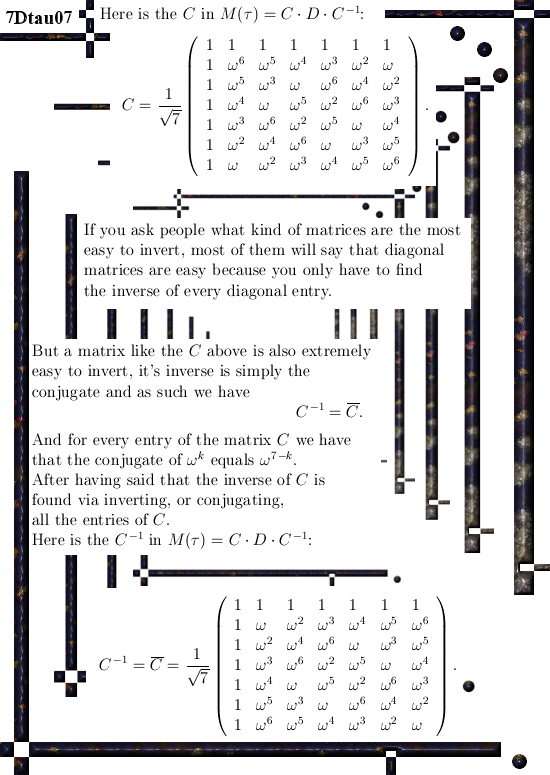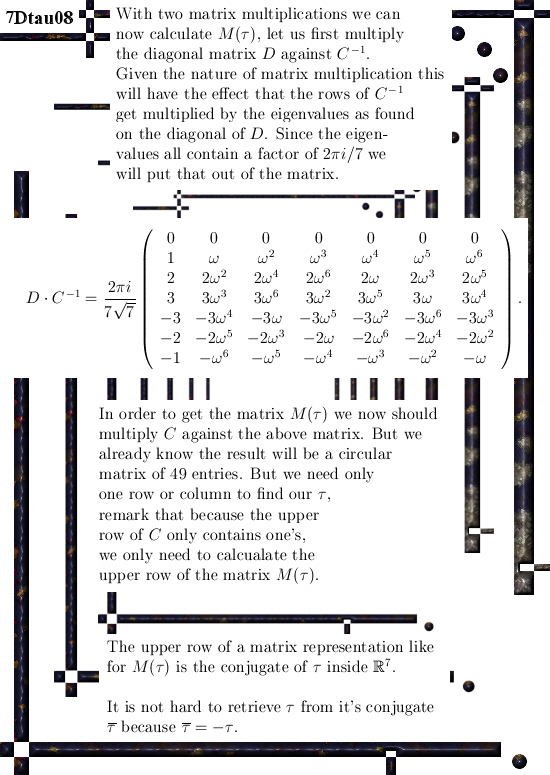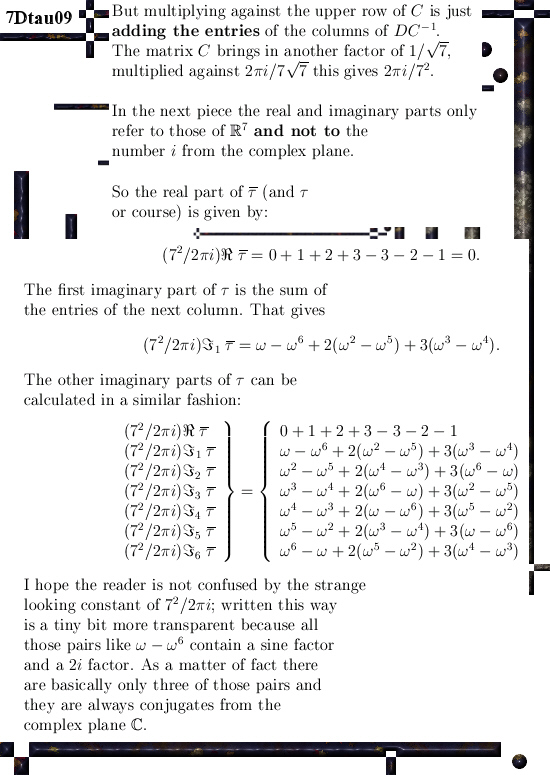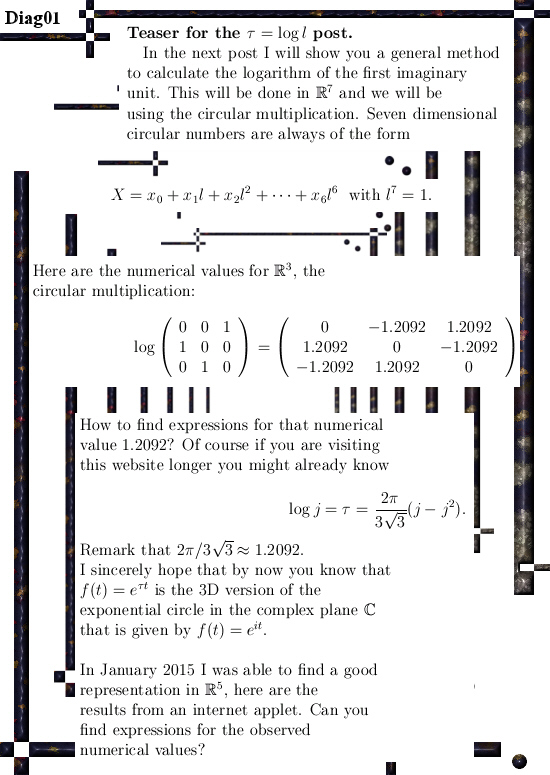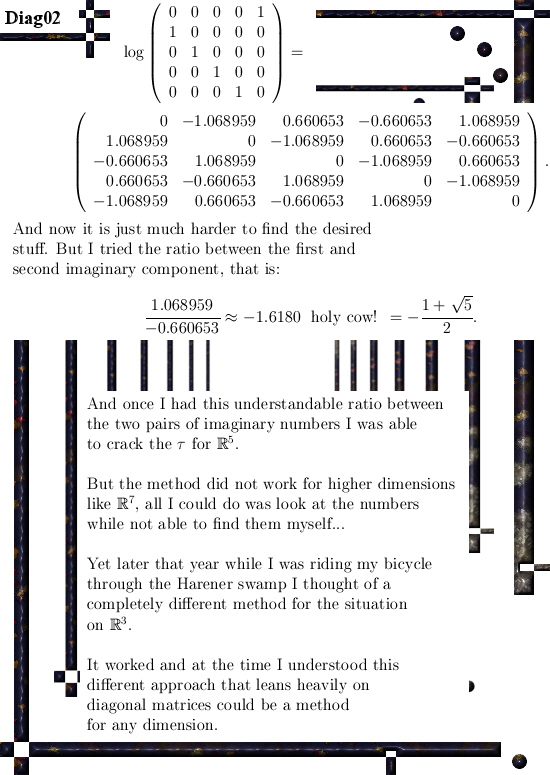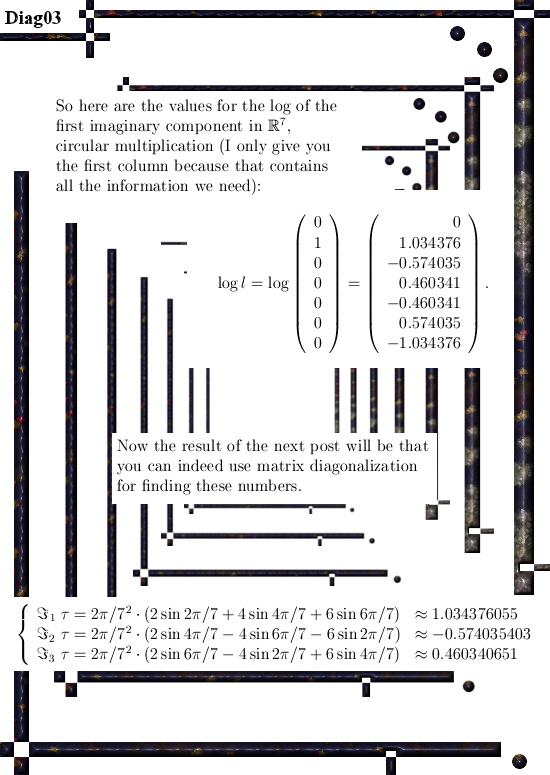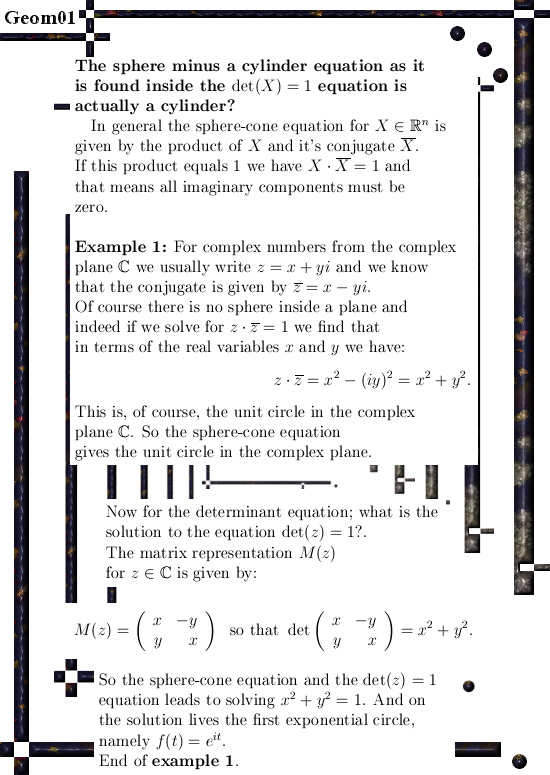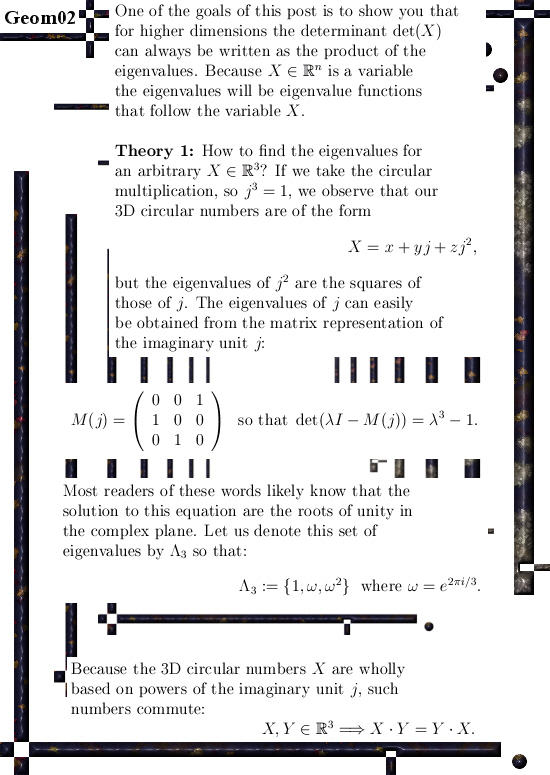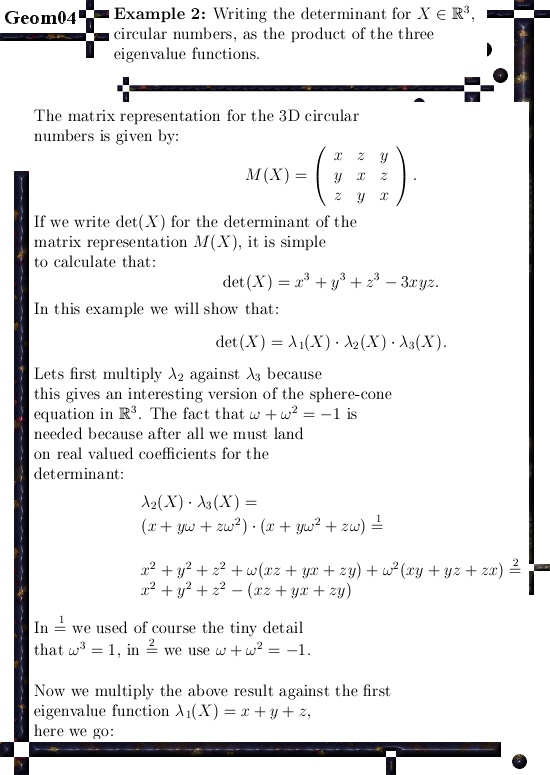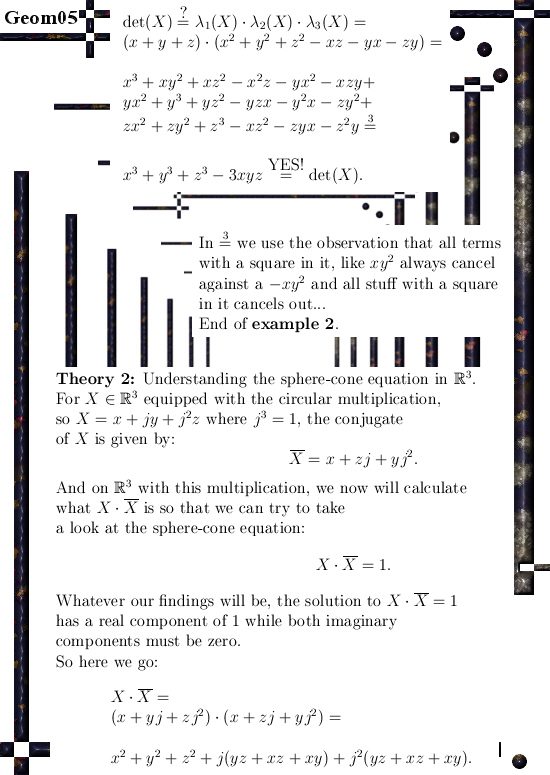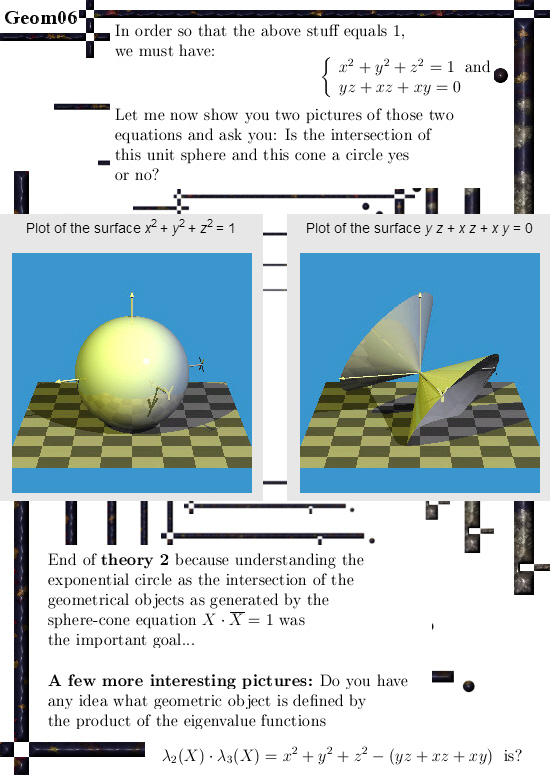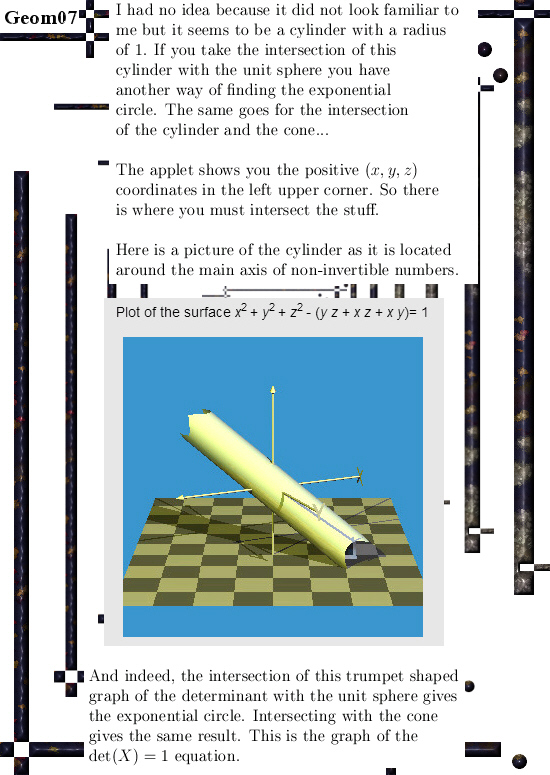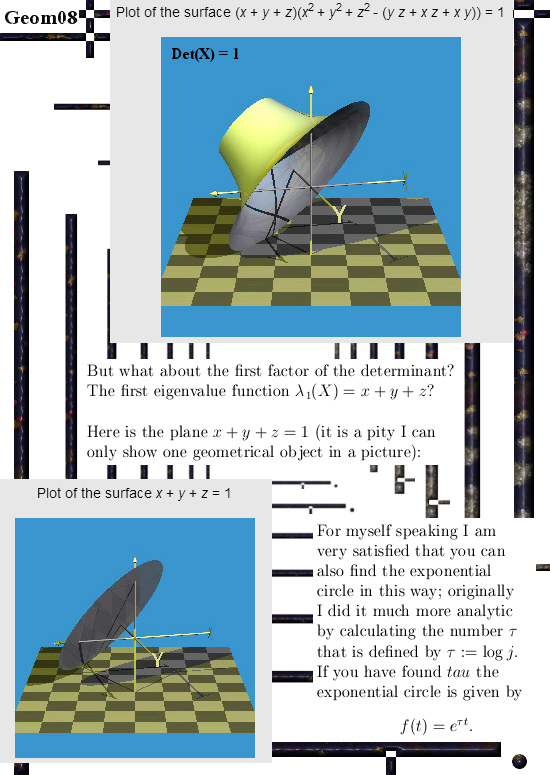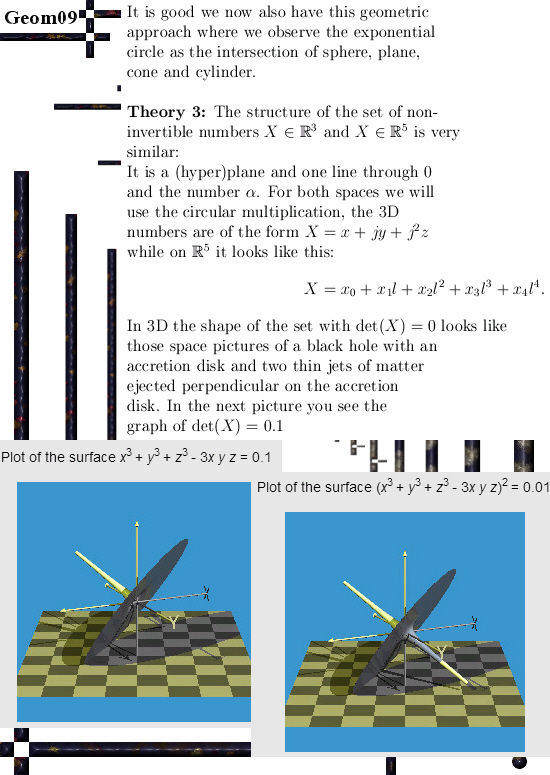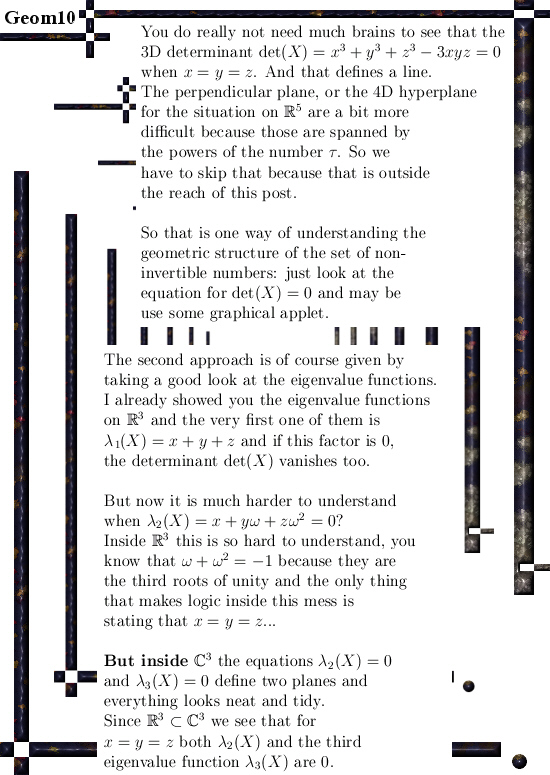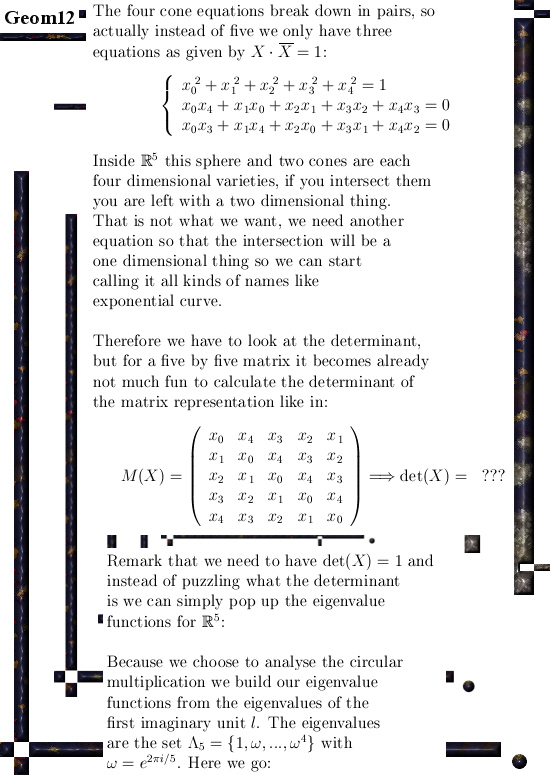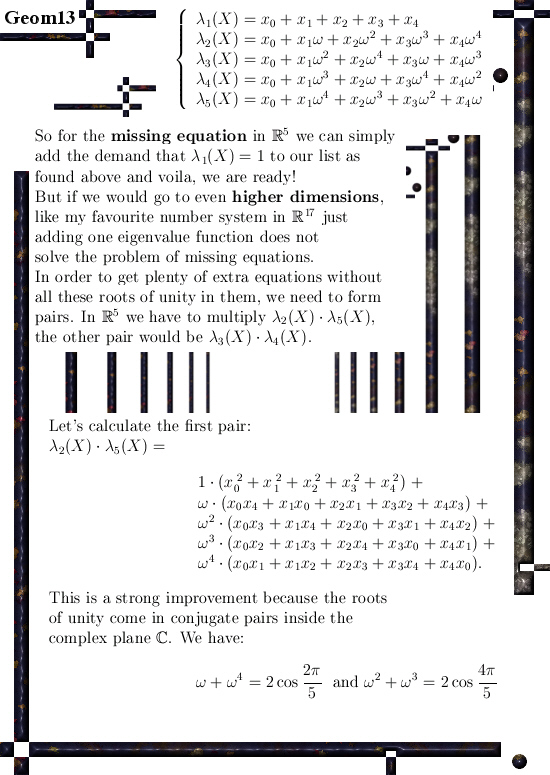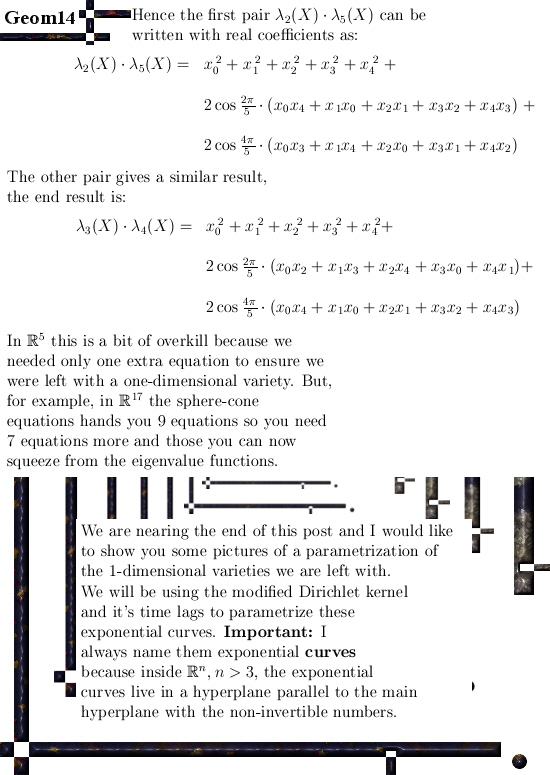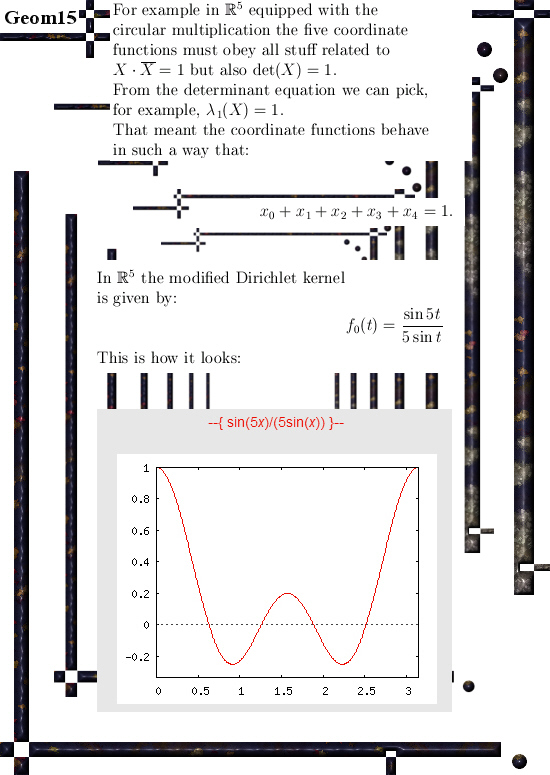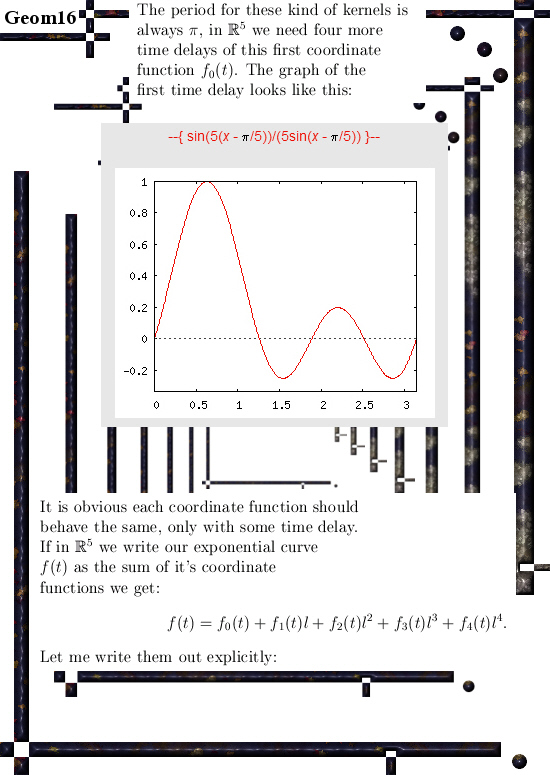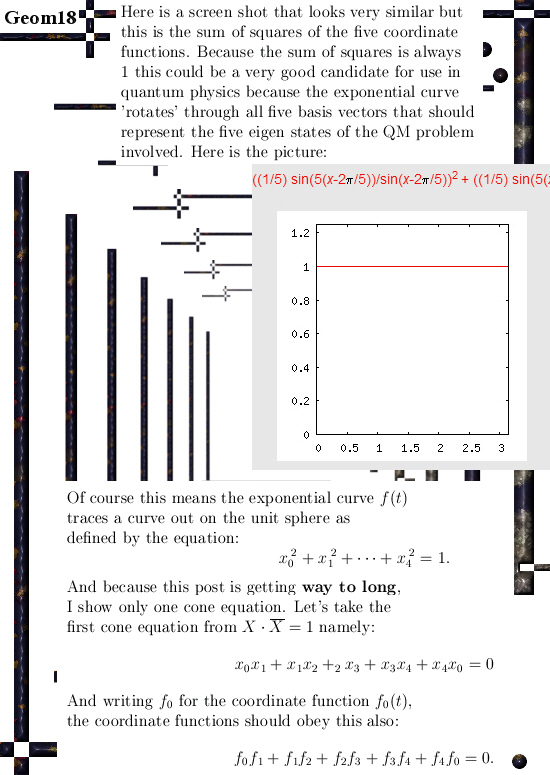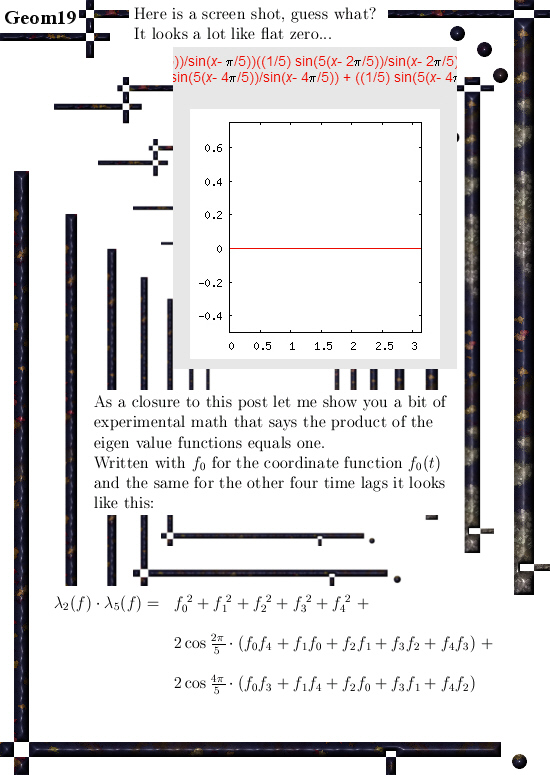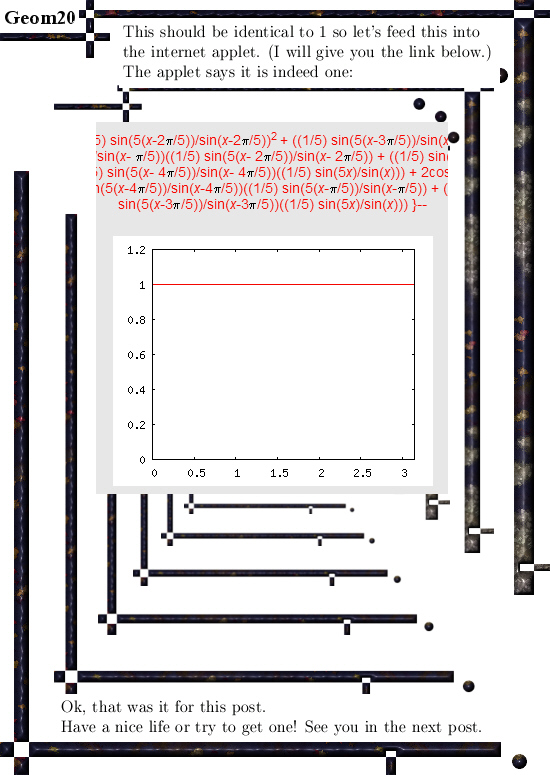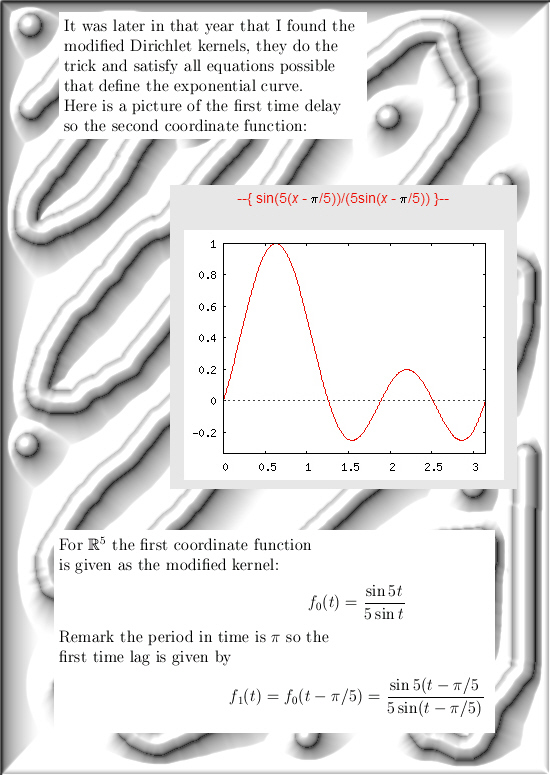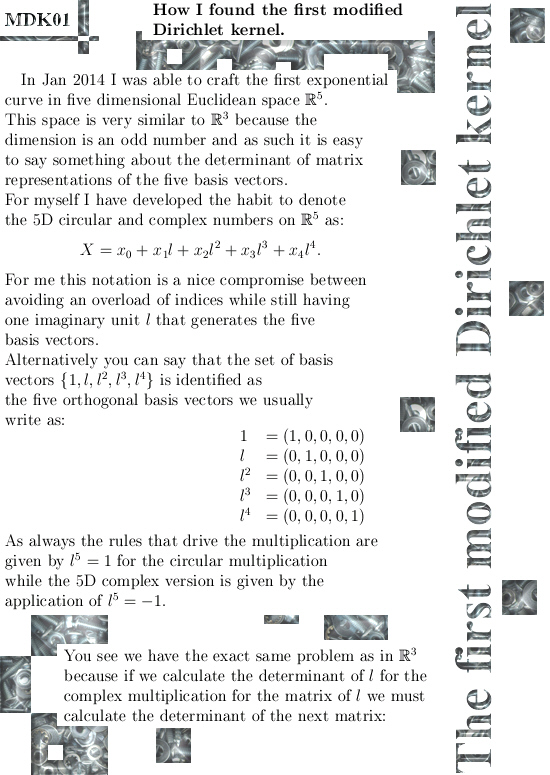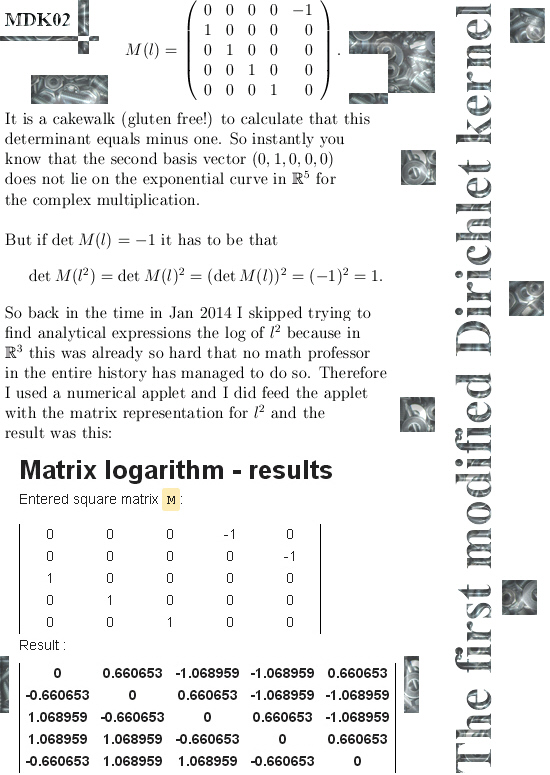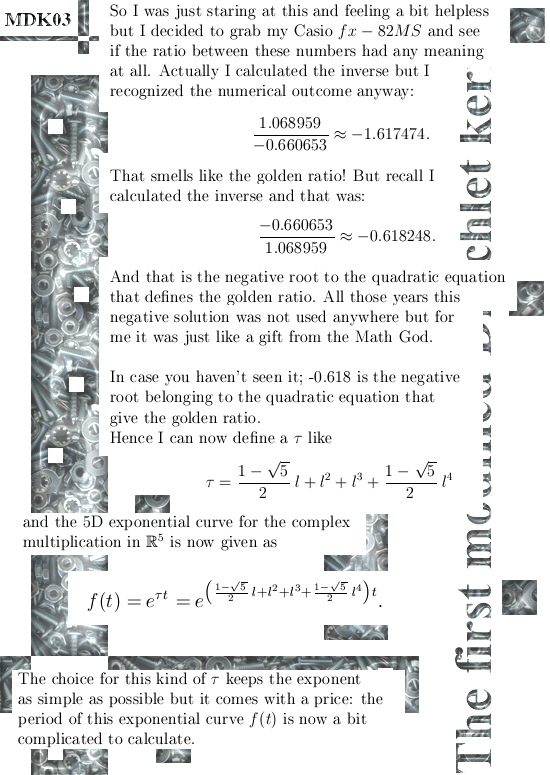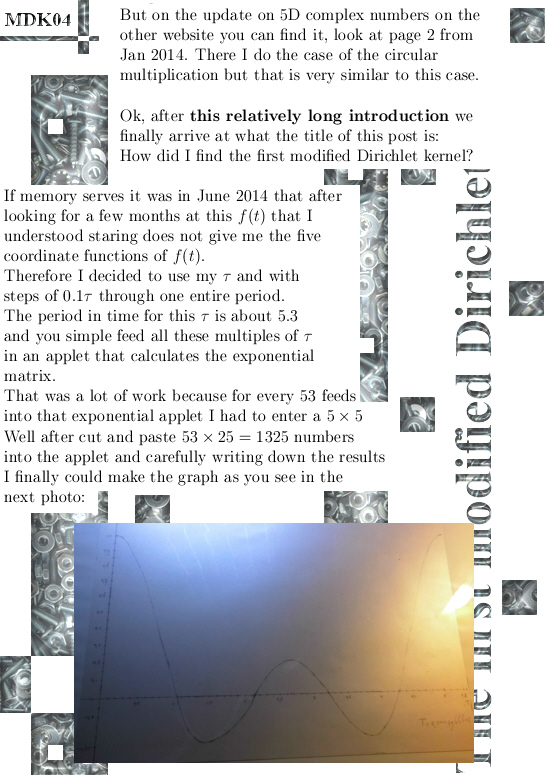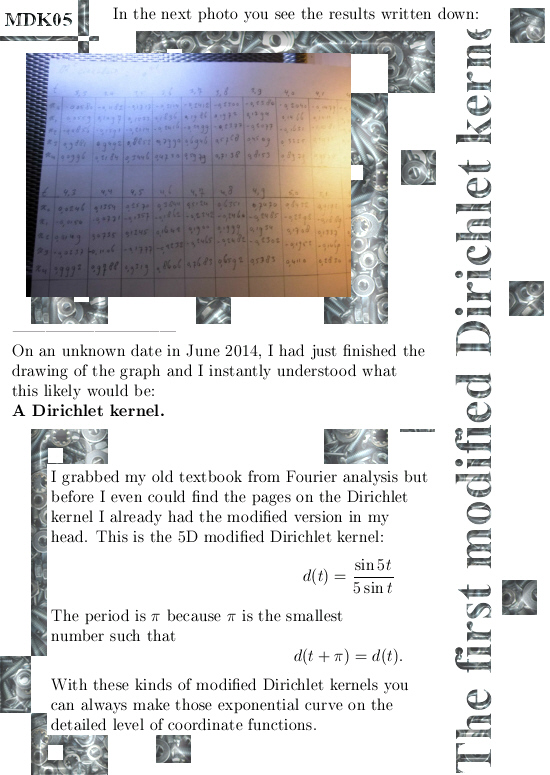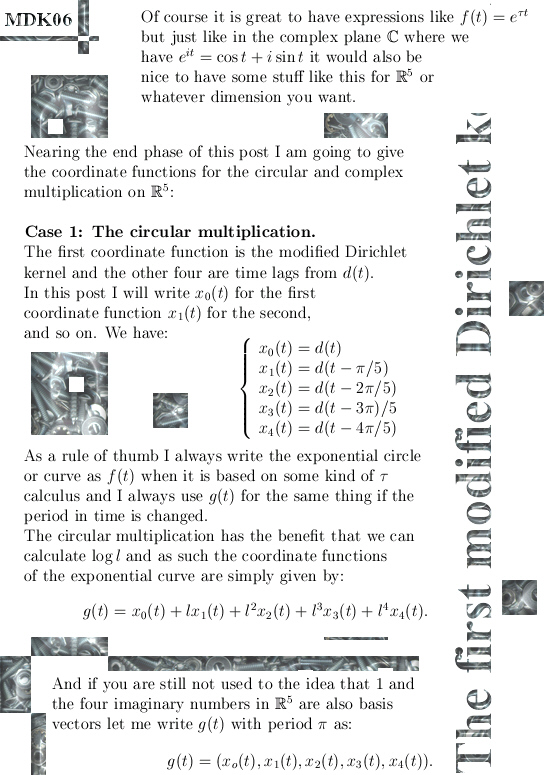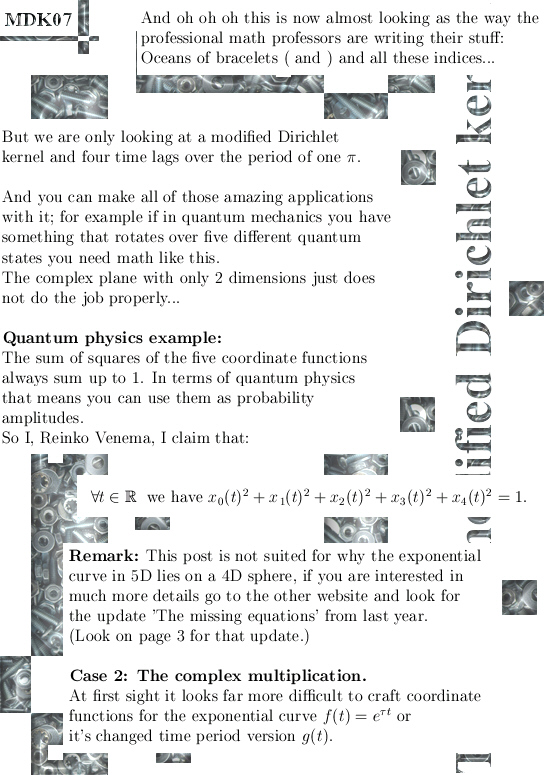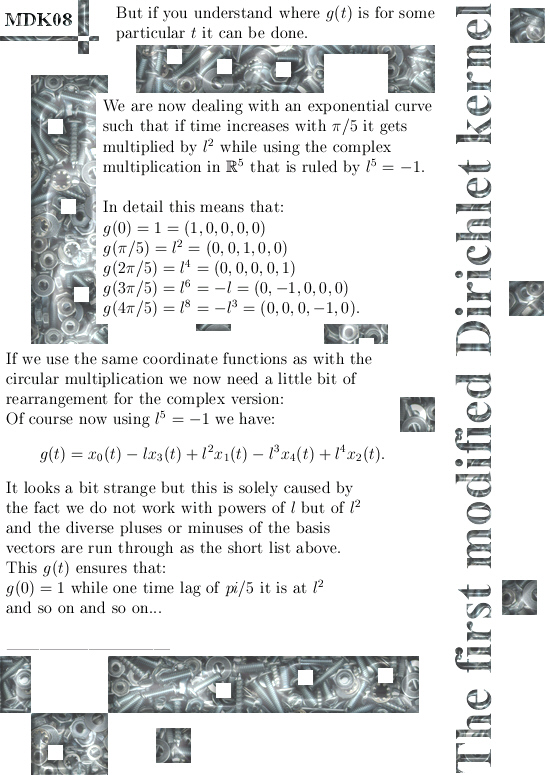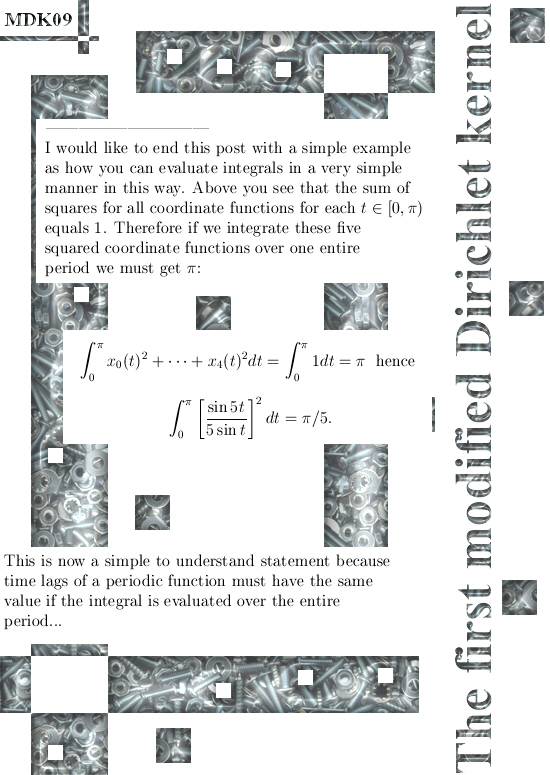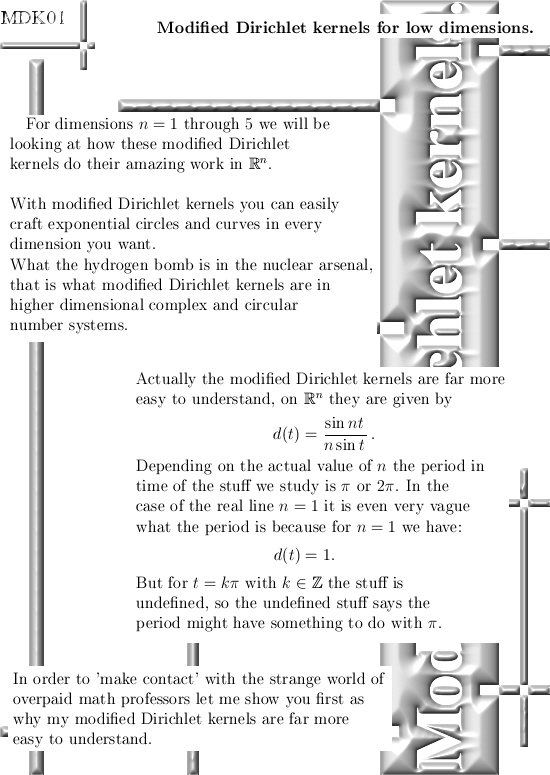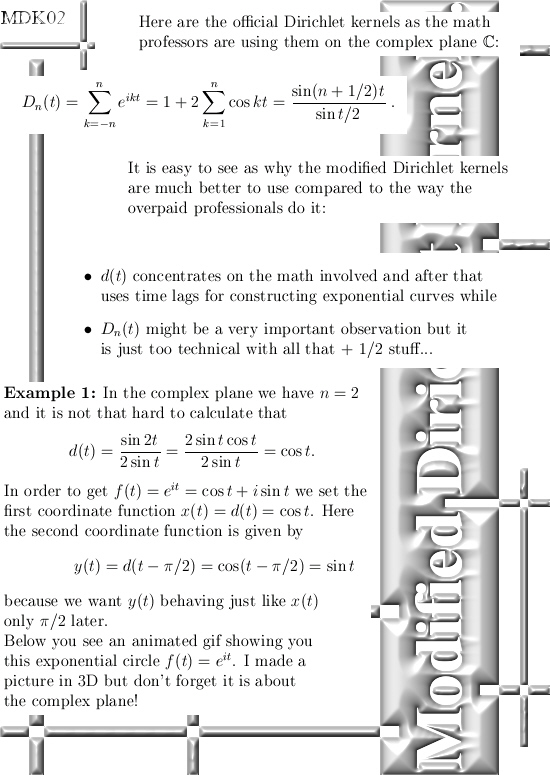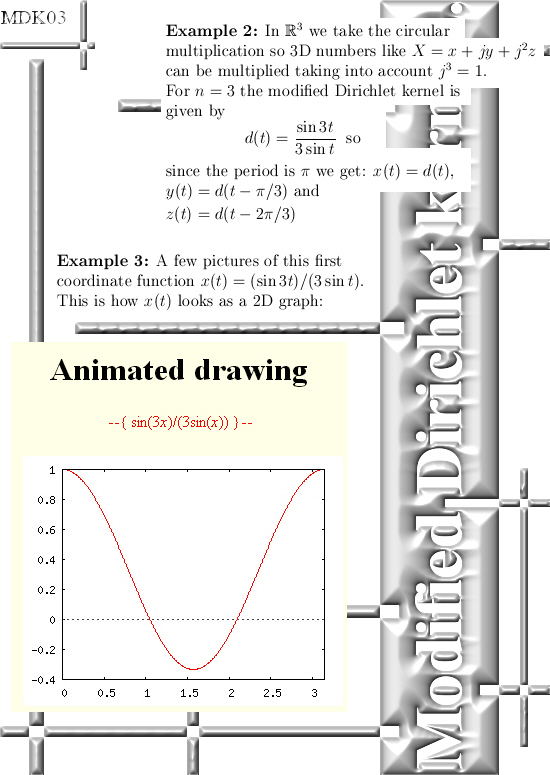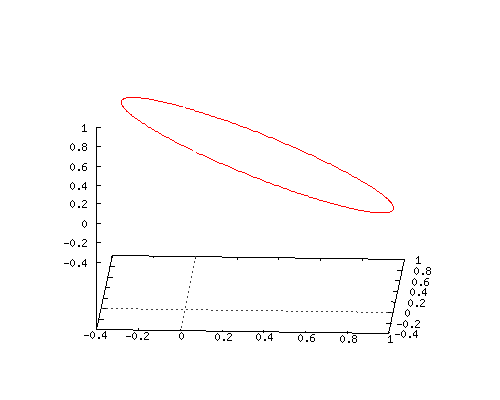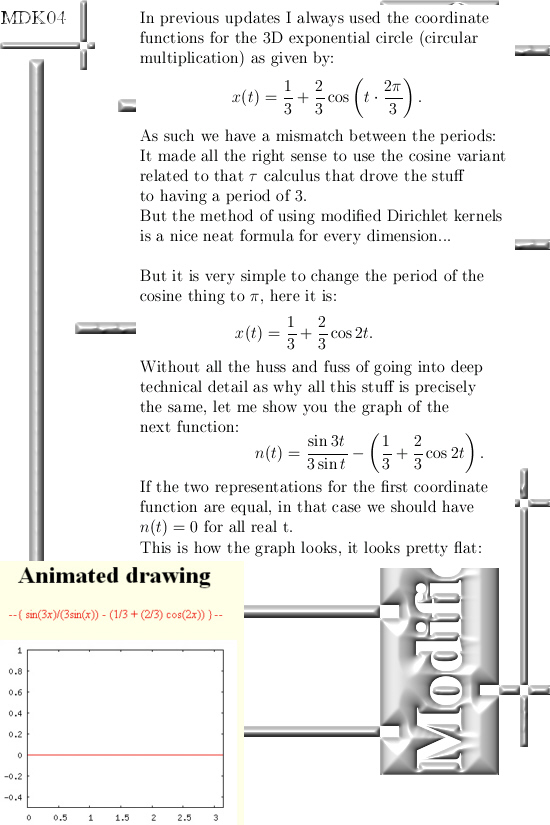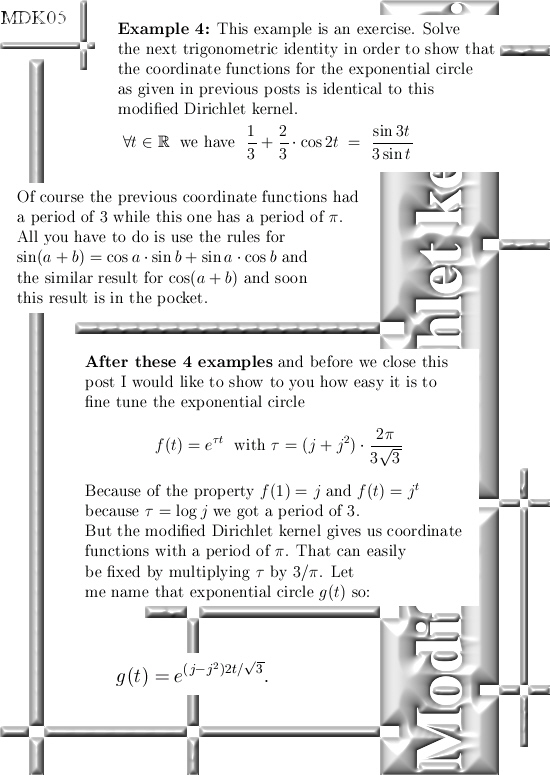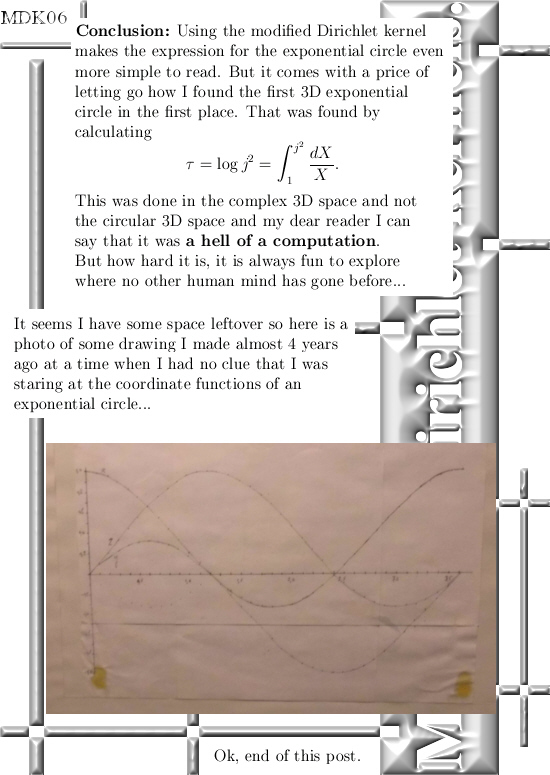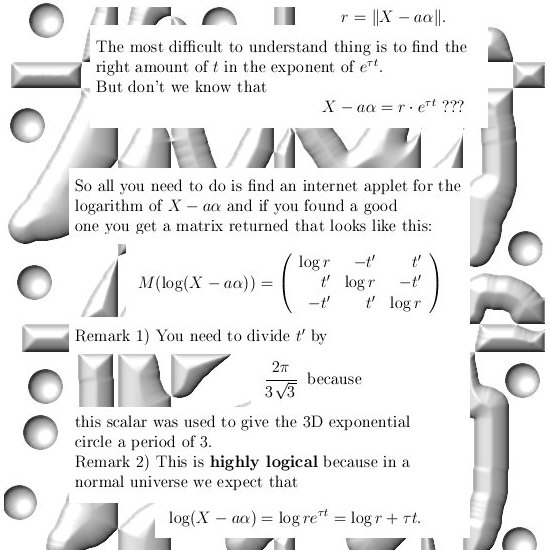This year a couple more video’s were published on youtube regarding this subject of the non-existence of 3D complex numbers but I skipped those and did not comment a thing. So why this video? Well those ‘proofs’ always have some things in common namely the idea that there are imaginary units in say 3D or 5D space that square to minus one.
And after that those people do some calculations or math manipulations, find something that contradicts and voila the conclusion is:
3D complex numbers do not exist.
Some people, but not many, are a bit sharper by stating this proofs that there is no 3D extension that includes the 2D complex plane.
But 3D or 5D or any dimension numbers do exist in there own way. In 3D space there is an imaginary unit who’s third power equals minus one, in 5D space the fifth power is minus one etc etc. And in all of those spaces you can do complex analysis because you can differentiate and perform integration ‘just like’ in the complex plane. As a comparison on those overhyped quaternions you can’t even differentiate the function that squares a quaternion. Those 4D quaternions have their own right of existence but they are not the 4D complex numbers, but I digress.
I wrote a very small math post, it is only two images long, with a proof as simple as possible that shows in real spaces with an odd number for the dimension, there are no numbers that square to minus one.
Now we all know that on the real line there is nothing that squares to minus one and in all other higher dimensional spaces if we take the determinant we get always get a real number. As such there is no determinant of any number that squares to minus one. And if you calculate the determinant of -1 (as a matrix in odd dimensions) you always get -1…
The proof below is all utterly simple but it’s relevance lies more into that it now goes for all multiplications in one single strike. So not only the so called complex multiplication but just everything that is a multiplication. If for some strange reason you want to think a bit of what all can pass as a multiplication, just use the search function of this website and search for big E. Big E is just a multiplication table although I present it like a square matrix for reasons that are obvious if you read that post.
At last I want to remark that although the title is a bit negative, I wish the composer of the video good luck with his math travels. That, by the way is the name of the video channel: Math Travel. Let me first post my two images and later the video.
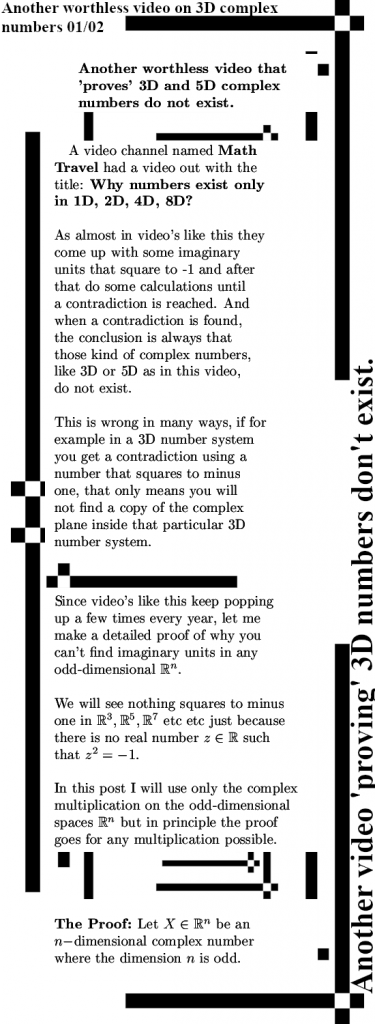
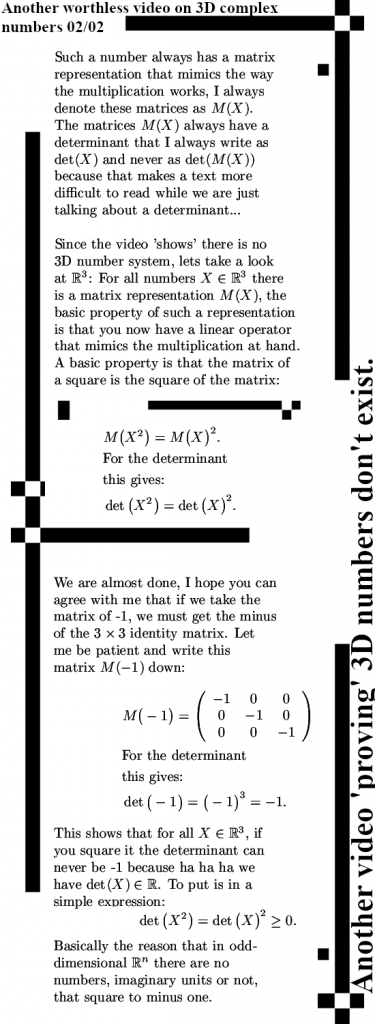
Ok, lets now all smile and wave at youtube so the next video will get shown to you:
Well that was it my dear reader, thanks for making it all to the end with all that boring math stuff and so.
